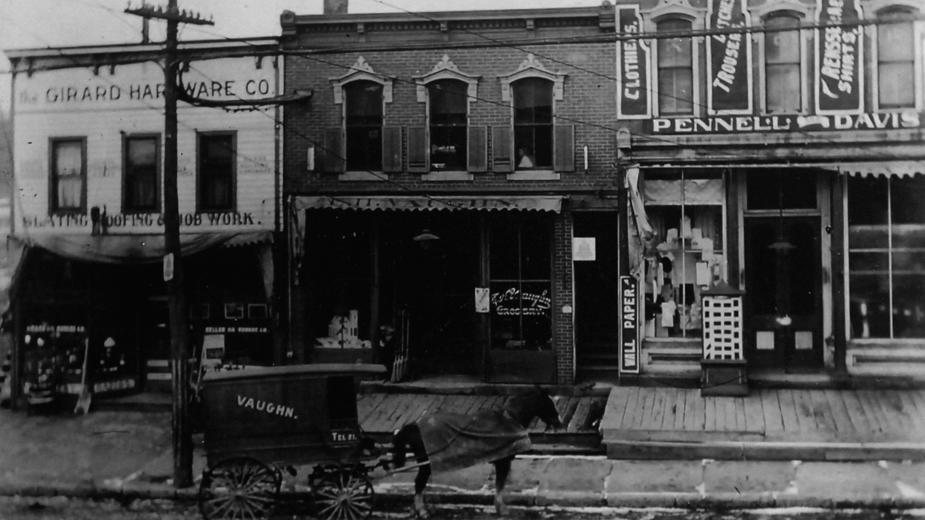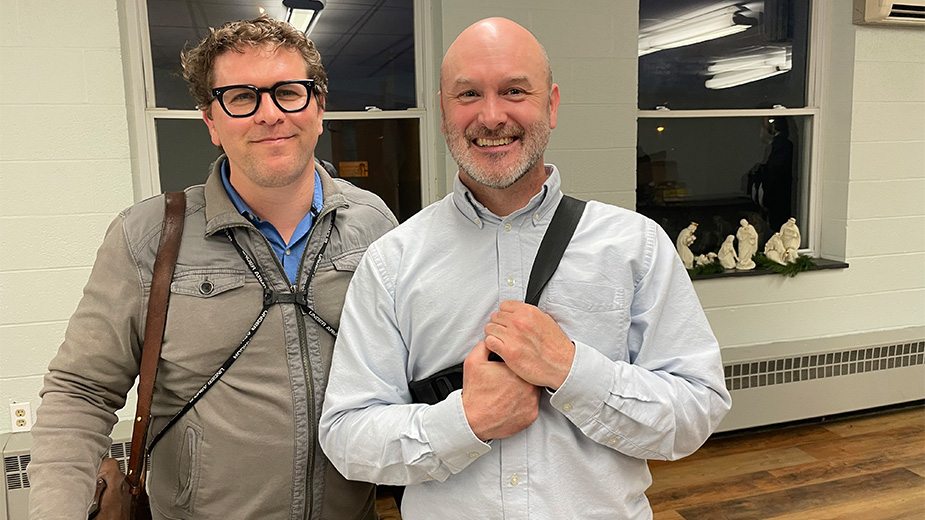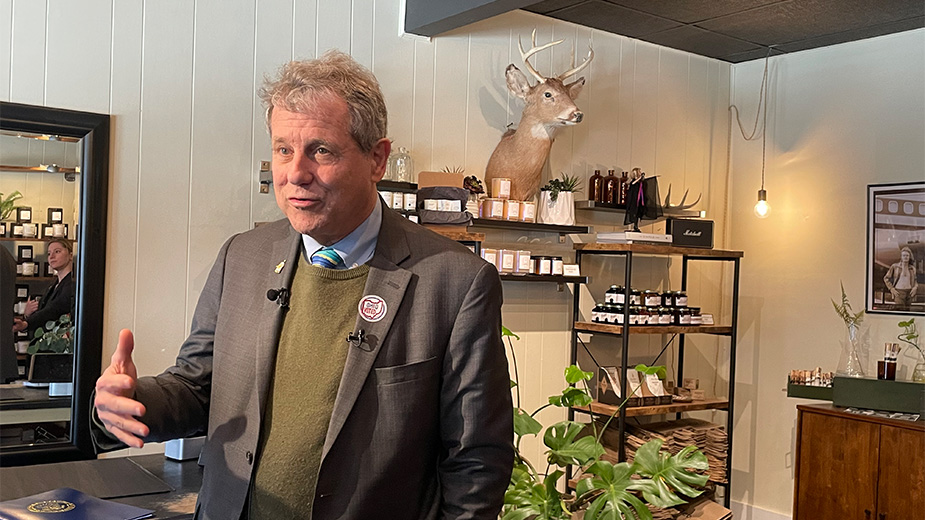Canal Brought Commerce to City of Girard
GIRARD, Ohio – In 1798, four land speculators, including Moses Cleveland (the founder of Cleveland), bought land in what would become Liberty Township. They divided their holdings into 25 lots, each measuring a mile square. One of them, Lot 10, became Girard.
Hieronimus Eckman arrived in Girard, the first settlement in the area, near a spring at the corner of what is now State and Prospect streets. The origin of the name Girard is unclear.
“Whence came the name ‘Girard,’ no one seems to know,” wrote Joseph Butler in his History of Youngstown and the Mahoning Valley. “It is accepted by many that the municipality of Girard was named in honor of Stephen Girard, the great American philanthropist, who died in 1831 [in Philadelphia], but there seems to be no ground for this except pure supposition.”
The building of the Pennsylvania and Ohio Canal led to layout of the municipality in 1836. David Tod, governor of Ohio during the Civil War, completed a town plat in 1837. The first survey produced 15 blocks and the original Black Horse Tavern was built shortly afterward at the corner of Liberty and State streets. In 1844, the first school opened on Liberty Street.
After the canal reached Girard in 1839, the town began to grow in earnest. For the first time, goods produced in the area could be economically shipped longer distances. It also became the southern terminus of the Cleveland and Mahoning Railroad in 1859. Youngstowners who wished to travel north routinely went to Girard to catch the train.
The population of Girard doubled during the 1860s as the village benefited from the mining of block coal in the surrounding area. A tannery, which attracted a large number of German immigrants, the Girard Iron Co. and the Girard Stove Works provided employment for newcomers. But iron and eventually steel became the dominant industries.
Readily available reserves of iron ore, coal and limestone provided the ingredients of the new manufacturing revolution, and in 1872 several members of Youngstown’s Wick family opened the Girard Rolling Mill. The company employed 153 and produced steel for agricultural tools along with chains, nuts and bolts.
Welsh immigrants and then Italians settled in Girard to work in these companies, and in 1891 the village of Girard received a charter from the state and held its first elections. The decline in local production hampered further growth in Girard until the beginning of the 20th century.
The Ohio Leather Co. opened in 1901 and grew into the largest calf leather processing plant in the country. Ohio Leather, where 500 worked, was an important source of employment outside of iron and steel.
The A.M. Byers Co. built a mill in 1908 that consisted of 88 puddling furnaces, which became the largest puddling mill in the country, employing the majority of Girard’s ironworkers.

Pictured: Businesses in downtown, like L.C. Barrett’s, thrived as manufacturing in Girard boomed.
Girard’s growing population needed somewhere to play as well as work. In 1897, Squaw Creek Park (later renamed Avon Oaks) opened as the first amusement park in the area. Billed as “Coney Island at Home,” Avon Oaks featured mule races, baseball games, rides, a Ferris wheel, roller coaster, a zoo and other attractions, which made it a rival to Idora Park in Youngstown. Avon attracted upward of 30,000 people on busy days, the Warren Tribune reported.
“It had two dance halls,” Girard resident E. Ross Mateer later recalled, “ a beautiful bird sanctuary, a summer theater besides many of the usual park attractions.”
Today, the Avon Oaks Ballroom, one of the original dance halls, is the final remnant of the old park.
Moving pictures came early to Girard. The Luna Theater, Girard’s first nickelodeon, opened on West Liberty Street in 1911. In 1915, Jacob Mock, a pioneer of miniature golf courses in Mahoning Valley, opened the first modern theater in the city.
In the 1930s, entrepreneur and Girard resident Peter Wellman opened two downtown theaters, which increased the prominence of the central business district. Wellman became one of Girard’s leading businessmen, controlling 14 theaters in Mahoning Valley, the Shane Drive-In in Andover and the Howard Theater in Ashtabula. Wellman, who also owned the Mahoning Country Club, helped to start the Mahoning Open. The Professional Golf Association event drew the likes of Ben Hogan and Gene Sarazen.
In 1912, the Brier Hill Steel Co. began construction of the Brier Hill Works and two plate mills – later to be replaced by the Electric-Weld Mill of Youngstown Sheet & Tube Co. – opened between 1916 and 1918. Driven by industrial expansion, Girard’s population increased nearly 300% between 1910 and 1930. Rapid economic and population growth allowed Girard to reach the status of a city in 1921.
Ohio Leather and the Youngstown Sheet & Tube’s Brier Hill Works provided large numbers of jobs for residents of Girard, So, too, did manufacturing plants in nearby McDonald, Warren, Niles and Youngstown.
By the end of the 1920s, there were 370 plants within 10 miles of Girard. Many residents preferred to live in the city, according to the Youngstown Vindicator, because, among things, Girard had the lowest mortality rate in the state. During a time when epidemics such as diphtheria still periodically broke out, the city maintained a reputation for being a healthful place to live.
Pictured: In 1859, Girard became the southern terminus of the Cleveland and Mahoning Railroad, bringing in travelers from across the region
Copyright 2024 The Business Journal, Youngstown, Ohio.



